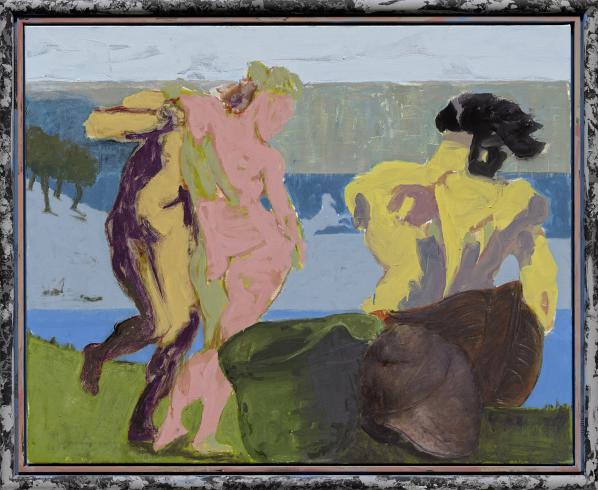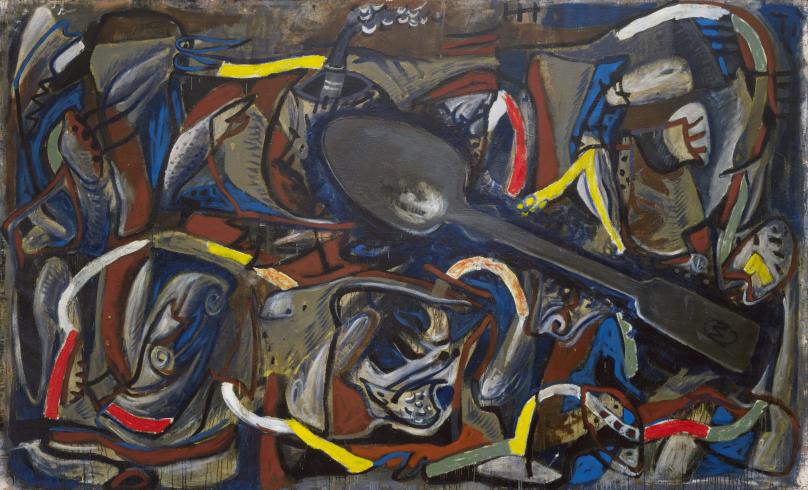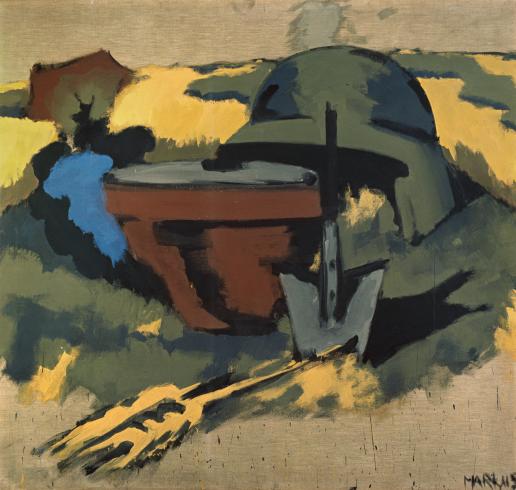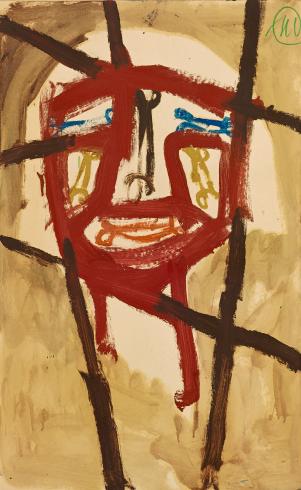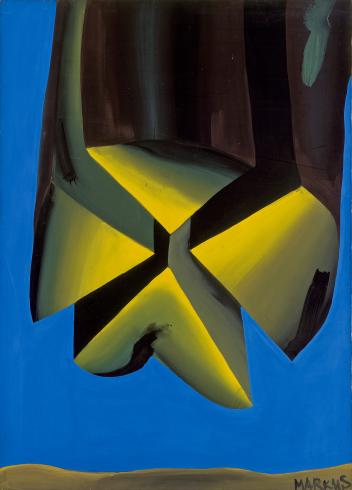Markus Lüpertz
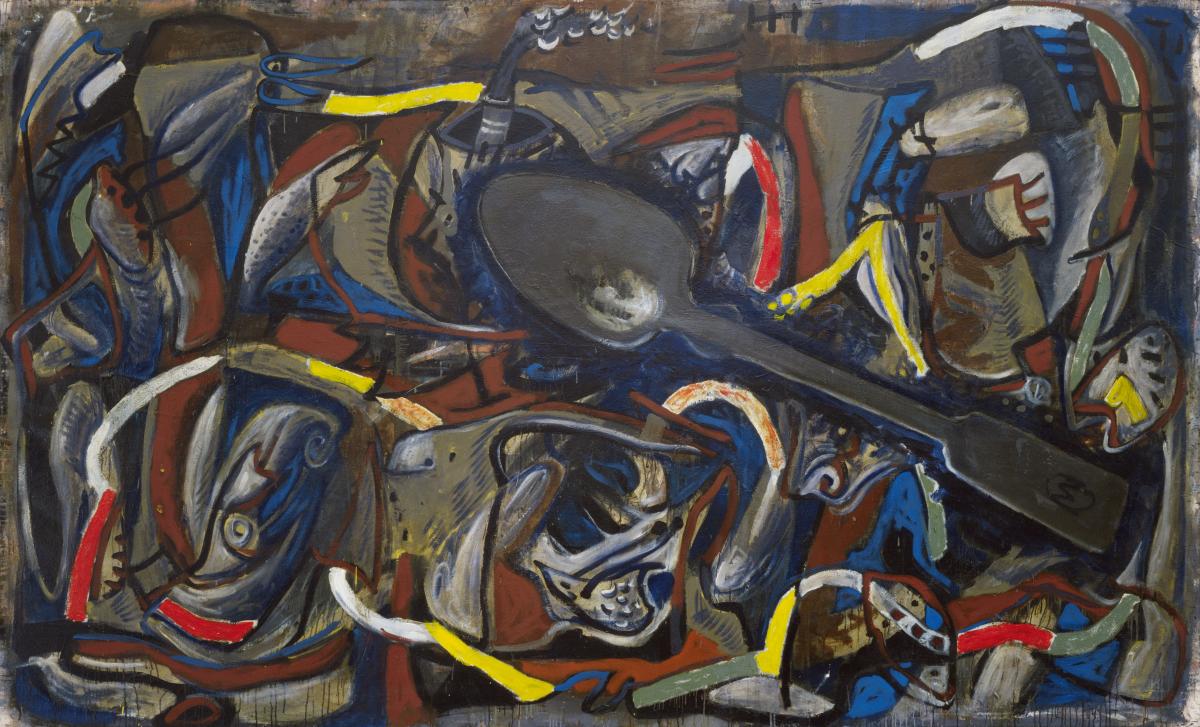
“To explain nature and what surrounds us was and is painting’s mandate and is the reason I make the effort.”—Markus Lüpertz
One of the most important post-World War II artists in Germany, Markus Lüpertz helped chronicle and shape the postwar image of his country, achieving enormous success across Europe. Astonishingly, this is his first major museum retrospective in the United States. This exhibition, organized in close collaboration with the artist himself, explores his five-decade career, from his earliest works—the perplexing “dithyrambs” and provocative manipulations of German motifs, such as helmets and fields of wheat—to the more recent paintings that are redolent with mythological subject matter and art historical allusions.
Lüpertz began his career some 20 years before the reunification of Germany, when the country was still in the shadow of the Berlin Wall and the persistent moral gloom of the Nazi aftermath. German artists strove to refind their voices amidst the social stigma of their nation’s recent history. In the years after the war, the art scene looked inward, becoming hesitant and provincial. By the early ’60s, painting itself fell out of fashion as minimalism and conceptualism came to the forefront abroad. In this context, Lüpertz adopted a rebellious position, an irreverent disregard for dominant conventions through his steely and serious paintings.
Lüpertz’s entire body of work is fraught with a fundamental tension between figuration and abstraction as the artist continuously challenges art-historical givens and norms of modernism. The viewer is often deliberately stumped by the “subject,” while simultaneously gripped and convinced by the drama and authority of the painting. Lüpertz explains this contradiction: “Art is a way of experiencing the artfulness of an object; the object is not important.” Out of the richly diverse, confusing, and unrestrained amalgam of references and approaches, what emerges is vigorous materiality, a sense of the physicality of art-making, and the creative manipulation of mass and volume.
Phillips Director and exhibition curator Dorothy Kosinski introduces the exhibition
Director’s Notes
Phillips Director Dorothy Kosinski, curator of Markus Lüpertz, shares her experience installing the exhibition with the artist.
It was a truly exhilarating experience to have the opportunity to get inside the artist’s head. It was fascinating to me, an art historian, who thinks in terms of progression, who thinks in terms of chronological orders, that none of that was important for Markus Lüpertz. In fact, he wandered through the gallery once, twice, three times, and changed the position of every object in the show. As he said to me, he was looking for an optical order. It had to do with robust juxtapositions of colors, of shapes, of small canvases and big canvases. Visitors will be disappointed if you’re looking for the early works, the middle works, and the late works. Instead you can go in any direction in this exhibit because he deliberately intermixes all of the works from the five decades of his very rich career.
So you might then ask, why? Is he trying to provoke us? Surely, but it also is an installation methodology that reflects his fundamental aesthetic philosophy. He and I were talking about this during his visit, his work is never about a style or consistent progression. It’s challenging us to think, “What is this object?”—when you look at the label it’s a tree trunk, but he paints it with the majesty of a 19th-century history painting, it’s monumental, it’s beautiful, and the subject is so trivial. For him that’s precisely the point, it’s not about painting an object—art is a way of experiencing the artfulness of things. Lüpertz said every time he paints a painting, he’s starting from the beginning, starting from the sort of infancy of his artistic practice so that every time he paints a painting it’s a voyage of discovery. He is never satisfied, he is returning again and again often to the same subjects, it’s a serious and eternal challenge that he grasps every time he takes paintbrush to canvas.
I also want to assure everyone that the dark lighting in the galleries is the desire and direction of the artist. He moved the light canisters with his silver-tipped cane, trying to give us a sense of the quality of light that he desired—not spotlighting the canvases but rather illuminating the wall around the canvases so that the canvas had a kind of even light, rather than a kind of artificial drama. As you’ll see, the works in the show are dramatic enough that we don’t have to try to stage them, and I think that that’s his point.
Markus Lüpertz coincides with the Hirshhorn Museum and Sculpture Garden’s Markus Lüpertz: Threads of History (May 24–September 10), an in-depth exploration of the artist’s revealing early work. Together, the two presentations form Lüpertz’s first major US museum retrospective.
The exhibition is organized by The Phillips Collection.
Generous support is provided by
and


Made possible through the support of The Frauke and Willem de Looper Charitable Fund.
Additional in-kind support is provided by

 and Lufthansa.
and Lufthansa.
